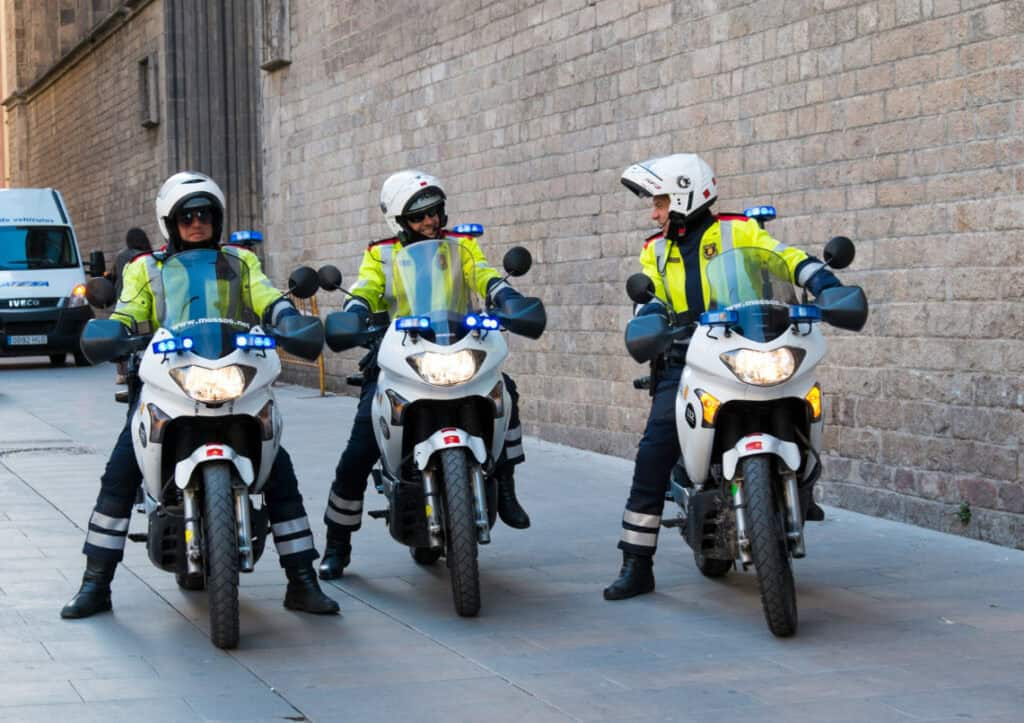Every vehicle, including motorcycles, must abide by certain traffic laws to maintain safety. A set of laws for motorcycles known as the right-of-way establishes driving rules in particular traffic scenarios. Following these guidelines or laws for motorcycles promotes safer driving conditions.
When you get your license, you need to know about these laws to prevent accidents.
Table of Contents

Learn About The Right-of-Way Laws for Motorcycles
Take a look at the common right-of-way laws for motorcycle drivers.
1. Lane Positioning
Just like cars, motorcycles are permitted to take up a whole lane, and other cars on the road ought to give them the appropriate space. Motorcycle riders’ safety might be at risk if drivers try to share lanes or cram too many people into one lane.

2. Left Turns
Turning left is the most frequent driving maneuver that results in an accident. There will be an indication at the traffic signal to let you know when cars can turn left and when they can drive straight, and the automobile turning left will give the road to any oncoming traffic if there is no indication.
When turning left into a building or a parking lot, motorcyclists should exercise caution since other cars will attempt to pass them and enter the area at the same time.
3. Overtaking and Passing
Motorcycles have the same rights as other vehicles to pass slower-moving traffic. Riders must, however, abide by all passing-related traffic rules, including those about turn signals and maintaining a safe distance from other cars.
4. Crosswalks
Pedestrians come first at the crosswalks, but keep an eye out for those on bicycles and skateboards since they are also considered pedestrians by the law. Even without a crosswalk, motorcycles never have the right of way over pedestrians, so be mindful of that.

5. Entering the Street from a Private Road
When leaving a parking lot, alley, or shopping center, drivers are required to give way to all oncoming traffic. You can proceed cautiously until you see adequate room to join the highway or roads safely.
6. Ambulance and Other Emergency Vehicles
It is your responsibility to give way to emergency vehicles, including ambulances and fire engines. To make room for emergency vehicles, all vehicles must move to the right side of the road.
Motorcycles have the same rights as other vehicles on the road. They also need to follow the same right-of-way rules that other vehicles follow. The right-of-way is determined by certain traffic laws and circumstances, and knowing when to give space might be the difference between a safe ride and a possible collision.
You are entitled to compensation if you were involved in an accident when another driver wasn’t following the right-of-way laws. Contact a motorcycle accident lawyer who can negotiate with insurance companies on your behalf to get you the compensation you deserve.
Right-of-Way Laws for Motorcycles – FAQs
- Q: Are motorcycles allowed to take up a full lane on the road? A: Yes, motorcycles are permitted to occupy an entire lane just like cars. Other vehicles should give motorcycles appropriate space and avoid sharing or crowding lanes.
- Q: What precautions should motorcyclists take when making left turns? A: Motorcyclists should be cautious when making left turns, especially at traffic signals. They must yield to oncoming traffic if there is no left-turn signal. Extra care should be taken when turning into buildings or parking lots, as other vehicles may attempt to pass simultaneously.
- Q: Can motorcycles overtake and pass other vehicles? A: Yes, motorcycles have the right to overtake and pass slower-moving traffic. Riders must follow all passing-related traffic rules, including using turn signals and maintaining a safe distance from other vehicles.
- Q: Do motorcycles have the right of way at crosswalks? A: No, pedestrians always have the right of way at crosswalks. Motorcycles must yield to pedestrians, as well as to cyclists and skateboarders, who are also considered pedestrians by law.
- Q: What should motorcyclists do when entering a street from a private road? A: Motorcyclists must yield to all oncoming traffic when exiting a parking lot, alley, or shopping center. They should proceed cautiously until there is adequate space to safely join the highway or road.
- Q: How should motorcyclists react to emergency vehicles? A: Motorcyclists must give way to emergency vehicles, such as ambulances and fire engines. All vehicles should move to the right side of the road to make room for emergency responders.
- Q: What should I do if I have been involved in a motorcycle accident and want to sue for damages? A: If you’ve been involved in a motorcycle accident and wish to seek compensation, contact a motorcycle accident lawyer. They specialize in personal injury law and can help you negotiate with insurance companies to get the compensation you deserve.



